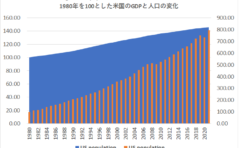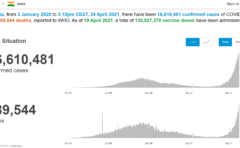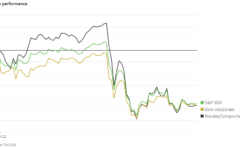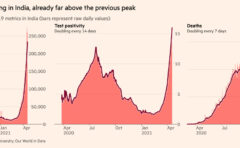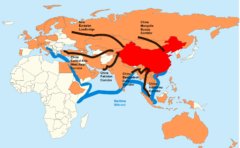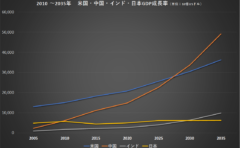The world enters a new stage of financial normalization amid spreading infection
【Omicron strains spread around the world.】
The Nikkei newspaper did not have the top story, but both the Wall Street Journal and the Financial Times had the top story on the increased restrictions due to the Omicron strain.
The following is the WHO’s global infection status. We can see that a new wave is coming.
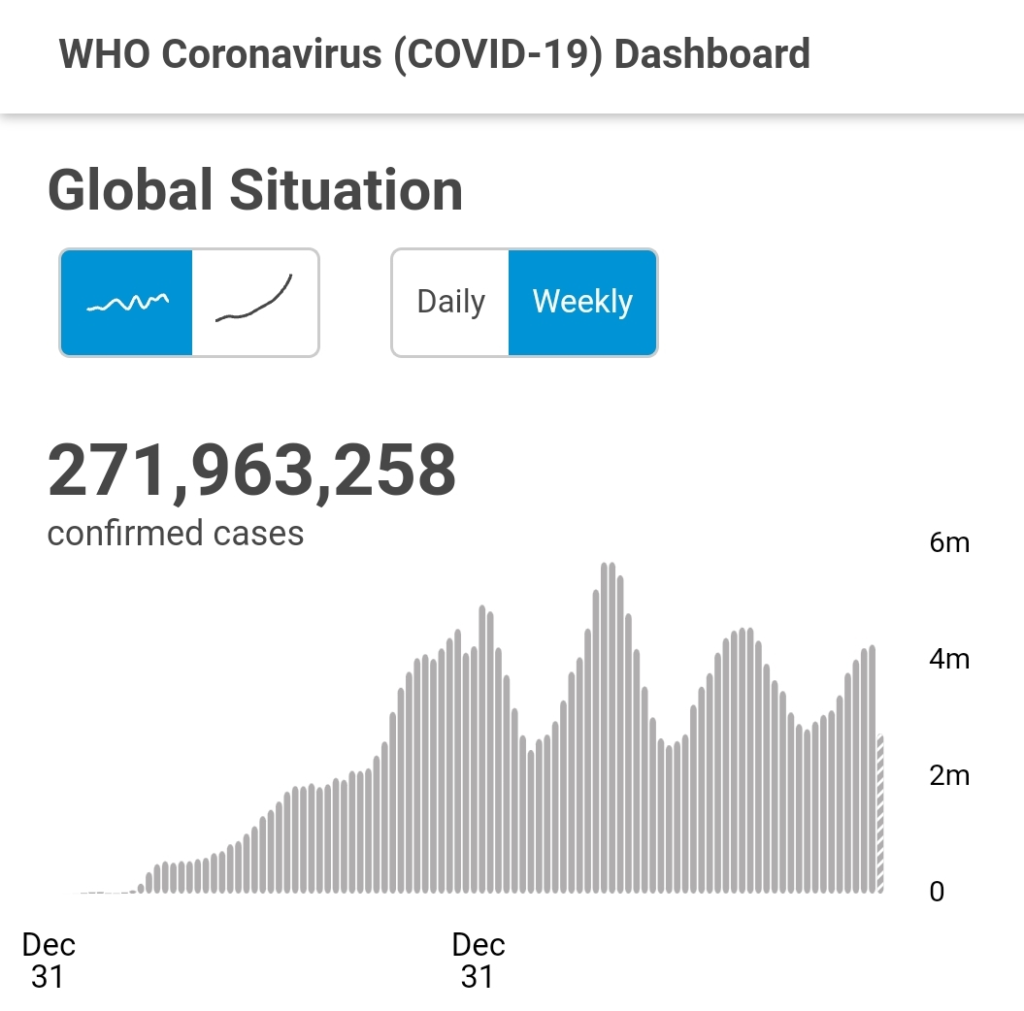
(WHO HP)
Infection is spreading both in The US and the EU.
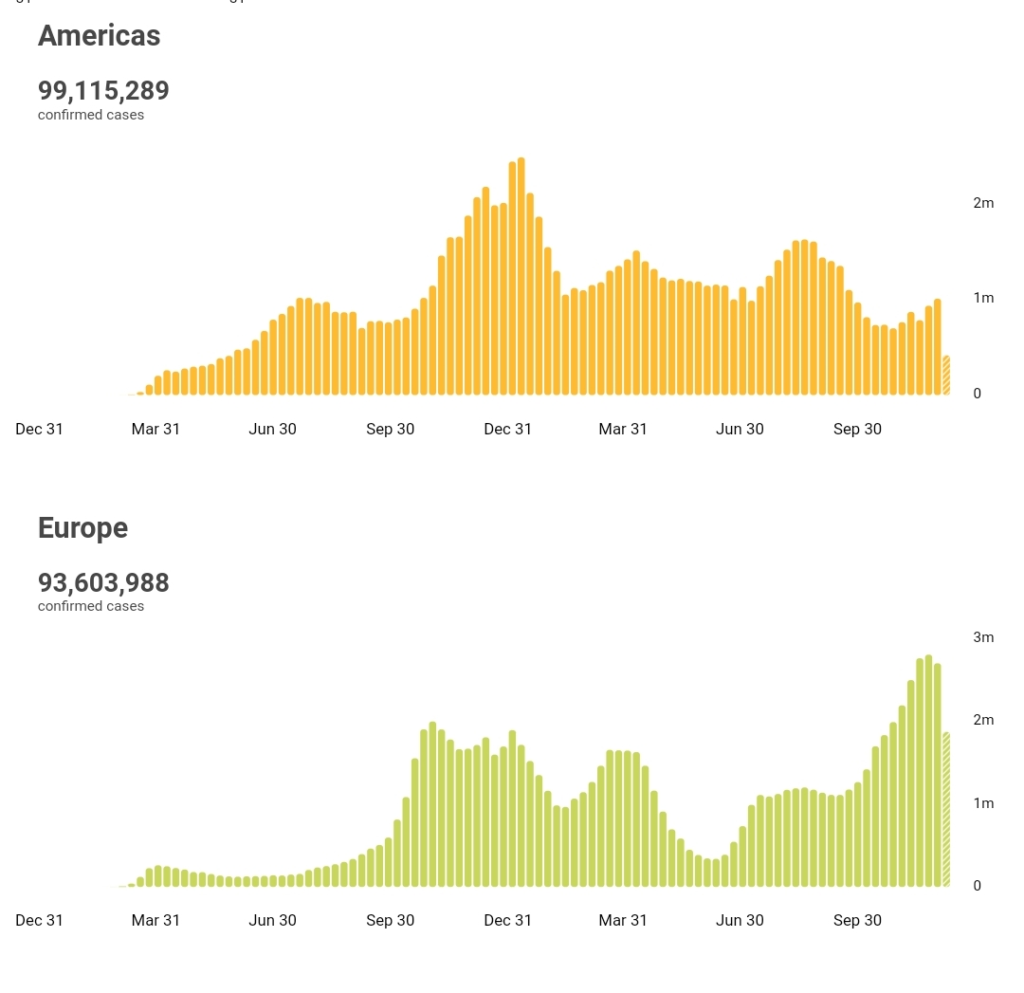
The following is an infection in the US and Europe. There was a time when the situation seemed to have calmed down, but now we can see that the infection is spreading again. Especially in Europe, the rate of infection in the number of infected people is very high.
The world has been forced to deal with the spread of the Omicron strain, a mutated form of the new coronavirus.
On the 18th, the World Health Organization(WHO) indicated that the number of infections with the Omicron strain “has doubled in 1.5 to 3 days.
There are concerns that the spread of the Omicron strain, which was confirmed in 89 countries as of December 16, will further accelerate the pace of global spread. Against this backdrop, the Netherland is taking steps to lock down the disease. Prime Minister Rutte announced at a press conference on the 18th.
Until the 14th of next month, indoor gatherings will be limited to a maximum of two people. However, on Christmas Day and New Year’s Eve, the limit will be relaxed to four people.
All school classes and extracurricular activities will be canceledcancelled until at least the 9th of next month, and a decision on whether to resume them after the 10th will be made by the Cabinet on the 3rd.
On April 18, British health officials announced that the number of new cases of the Omicron strain per day has reached a record high of 15,959, bringing the total to 24,968. In the capital city of London, Mayor Khan declared a “grave situation” due to the increasing burden on medical institutions.
As for the new coronas as a whole, the number of newly infected people in the UK was 94,180 on the 18th alone. This continues to be the worst level since the start of the pandemic last year.
The government is hurrying to provide additional vaccinations as a precaution, saying that hospitalization and deaths occur about two weeks after infection.
In France, Prime Minister Castex announced on April 17 that restaurants and hospitals will be open only to vaccinated people because the Omicron strain of the new coronavirus is spreading rapidly. The government says it will submit a related bill to the Diet at the beginning of the year. In an effort to encourage additional vaccinations, the timing of the third vaccination will be moved up by one month, so that vaccinations can be given four months after the second vaccination.
In France, the number of new infections per day reached 65,000 on March 15, and several hundred of them have been confirmed as Omicron strains. It is expected that the majority of cases will be of the Omicron strain by the end of the year.
In France, the number of new infections per day reached 65,000 on the 15th. According to Mr. Kastex, at least several hundred cases of the Omicron strain have been confirmed so far, and “by the end of the year, the Omicron strain will make up the majority of cases.
There are signs that the Omicron variant of the new coronavirus is spreading in the United States. The number of people hospitalized with the new coronavirus has jumped 45 percent since last month, and the number of new infections per day has increased 40 percent to a seven-day average of 123,000, according to a Reuters count. The number of new infections per day has also increased by 40%, reaching an average of 123,000 in seven days.
Pfizer Inc. of the U.S. said on April 17 that the pandemic of the new coronavirus may not be over until 2024. The pandemic may not be over until 2024.
A series of Broadway performances have been canceled, and Harvard University has announced that it will offer online lectures for three weeks in January, and Stanford University will begin its winter term online.
【Monetary normalization due to inflation concerns】
The U.S. Federal Reserve Board (FRB), at its Federal Open Market Committee (FOMC) meeting on March 15, decided to accelerate the tapering of its quantitative easing program to purchase U.S. Treasury bonds and other assets.
The FOMC has brought forward the end of tapering from June 2022 to March 2022 and is expected to raise the policy rate three times in total during 2010.
However, former Treasury Secretary Summers raised concerns about accelerating inflation early on, and the inflation rate, which is at its highest level in about 40 years, leaves the impression that monetary policy has taken a back seat.
After the end of tapering, interest rates will have to be raised, but the Fed’s policy of raising rates does not seem to have much room to do so. The market has read about this, and the reason is that the debt is ballooning to historic levels, making it vulnerable to higher interest rates. According to the International Institute of Finance (IIF), the combined global debt of the public and private sectors will be $296 trillion at the end of September, up 6% in a year and 350% of GDP.
Nevertheless, interest rates will undoubtedly rise in the future, and the U.S. is heading for financial normalization amidst the growing infection.
Next is the EU. The European Central Bank (ECB) decided at its Board of Governors meeting on March 16 that it will discontinue the purchase of new assets by the end of March 2022 under the emergency purchase program introduced during the Corona crisis. With the end of the program, which has a total value of 1.85 trillion euros (about 240 trillion yen), the amount of asset purchases after April 2010 is expected to be reduced to less than half of the current level.
To prevent confusion in the bond market and other markets due to the sharp decline in purchases, the Bank decided to raise the number of purchases under the quantitative easing program to 40 billion euros per month from April to June, 30 billion euros per month from July to September, and 20 billion euros per month from October.
The key policy rate (0%) and the central bank deposit rate (-0.5%) will remain at their current levels for the time being. The interest rate hike is expected to come after the end of quantitative easing, and it is not yet clear when that will be. Compared to the Federal Reserve, which is bringing forward the end of its quantitative easing program to rise to raise interest rates sooner, the pace of easing is slower.
However, even if the rate hike schedule is slow, there is no doubt that the Fed has turned the corner toward monetary normalization.
And then there is the UK. This was a surprise to the world. On the 16th, the Bank of England, the central bank of the UK, announced that it would raise its policy rate by 0.15% to 0.25% per annum on the same day.
As for the quantitative easing program to purchase government and corporate bonds, the Monetary Policy Committee unanimously decided to maintain the purchase limit at 895 billion pounds (about 135 trillion yen). The balance has almost reached the upper limit, and new purchases will be halted to maintain the scale for the time being.
The decision to switch to easing measures was due to the faster-than-expected rise in prices: the CPI rose 5.1% year-on-year in November, the largest year-on-year increase in 10 years and two months since September 2011, and more than 2.5 times the inflation target (2%). The need to tighten monetary policy was further heightened by the unstoppable rise in prices due to supply constraints on labor and materials and soaring energy prices.
The U.K. is one step ahead in monetary normalization.
How is Japan doing against the world? At the Bank of Japan’s last policy meeting in 2021, it was decided to maintain the status quo on its massive monetary easing measures. However, in March of 2021, the BOJ significantly reduced the amount of Exchange Traded Fund (ETF) purchases. Although the BOJ is not yet on the verge of normalization, it is nevertheless assessing the timing for a shift in monetary easing.
In this way, the world is beginning to move toward financial normalization.
【Expansion of Omicron shares, financial competition under micro regulation】
With the spread of the Omicron strain, regulations are being tightened again. It is possible that economic activity will stagnate, but the central bank is more concerned about inflation.
The central bank is more concerned about inflation than economic stagnation caused by the spread of the Omicron strain. What will happen to the stock and bond markets when they move toward monetary normalization in the face of tighter restrictions on the spread of the disease?
This is something that the world has yet to experience. Immediately after the announcement of the end of quantitative easing, the New York Dow and other markets rose as expected, but have since been on a downward trend. We still don’t know what will happen.
What remains to be seen is how the market will react to the spread of the infection, the regulatory situation, and the monetary policy toward normalization. That’s the question. By the end of the year, the beginning of the year, and into spring, we should be able to see the impact of monetary normalization amid a spreading infection. Until then, we can say that the world is moving to a new stage that we have not experienced before.
That’s all for today. Thank you very much.



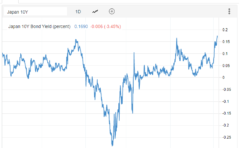


-240x148.jpg)





